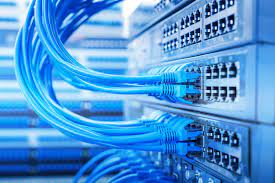Integrated Communication Network
- Home
- IT Services
- Integrated Communication Network
Integrated Communication Network
Integrated communication network (ICN) refers as interconnected system that combines various communication technologies, services and devices into a unified Infrastructure. This includes technologies like data network, telephone network, wired network, wireless network and more. The goal of an integrated communication network is to enable seamless communication between different devices and platforms.
Rinfras specializes in pioneering solutions within the building industry’s integrated communication network sector. With a profound focus on technological advancement and seamless connectivity, Rinfras is at the forefront of revolutionizing how buildings interact and communicate. The core essence of Rinfras’s business lies in designing, implementing, and optimizing integrated communication networks that seamlessly blend data networks, voice communication, security systems, building automation, and more.
By meticulously crafting interconnected ecosystems, Rinfras empowers buildings to operate efficiently, fostering an environment where occupants experience heightened convenience, productivity, and safety. Through its cutting-edge expertise and commitment to excellence, Rinfras is reshaping the landscape of building communication networks, ushering in a new era of intelligently connected and responsive structures.
ICN includes range of technologies and services, including:
- Data Networks: Implementing structured cabling systems to provide high-speed data connectivity throughout the building. This includes Ethernet connections for computers, servers, and other networked devices.
- Voice Communication: Integrating telephone systems, intercoms, and VoIP (Voice over Internet Protocol) to facilitate clear voice communication within the building.
- Wireless Connectivity: Setting up Wi-Fi networks to provide wireless internet access and connectivity for portable devices throughout the building.
- Building Automation: Connecting various building systems like HVAC (heating, ventilation, and air conditioning), lighting, and energy management through a centralized control system for improved efficiency and control.
- Fire and Life Safety Systems: Integrating fire detection, alarm, and evacuation systems to ensure the safety of occupants in case of emergencies.
- Digital Signage: Implementing digital displays for wayfinding, information dissemination, and advertising purposes.
- IoT (Internet of Things) Devices: Incorporating IoT devices such as smart sensors, actuators, and other connected devices that enhance building functionality and user experience.
- Audio-Visual Systems: Installing audio and video systems for presentations, conferences, and entertainment purposes. This could include projectors, screens, sound systems, and video conferencing equipment.
- Security Systems: Integrating security cameras, access control systems, and alarm systems to enhance building security and monitoring capabilities.
- Unified Communications: Enabling seamless integration between different communication methods, such as email, instant messaging, voice, and video calls, to improve collaboration and productivity.
- Remote Monitoring and Management: Allowing building managers and administrators to remotely monitor and manage various building systems and operations.

There are 2 ways to achieve icn:
ACTIVE NETWORK
- Active networks include active electronic components, such as switches, routers, hubs, and repeaters, which require a power source to operate.
- These components actively manage and direct data traffic within the network. They make decisions about how to route data packets and maintain signal strength.
- Active networks are capable of amplifying signals, enabling data to travel longer distances without degradation.
- They can perform various network functions, such as packet switching, routing, and filtering.
- Examples of active network devices include network switches, routers, firewalls and network interface cards (NICs).
PASSIVE NETWORK (GPON)
- Passive networks consist of passive components, such as cables, connectors, splitters, and patch panels. These components do not require power to operate.
- They do not actively manipulate or control data traffic. Instead, they transmit data signals as they are received.
- Passive networks do not amplify signals or perform complex routing tasks. They are generally simpler in design and operation.
- These networks are often used for shorter distances and simpler network setups.
- Examples of passive network components include Ethernet cables, patch cables, connectors, and simple signal splitters.

We Are Here To Find The Best Solution For Your Enterprise
Reach out to us today if you want us to architect a solution, require hardware or simply need a competitive quote


